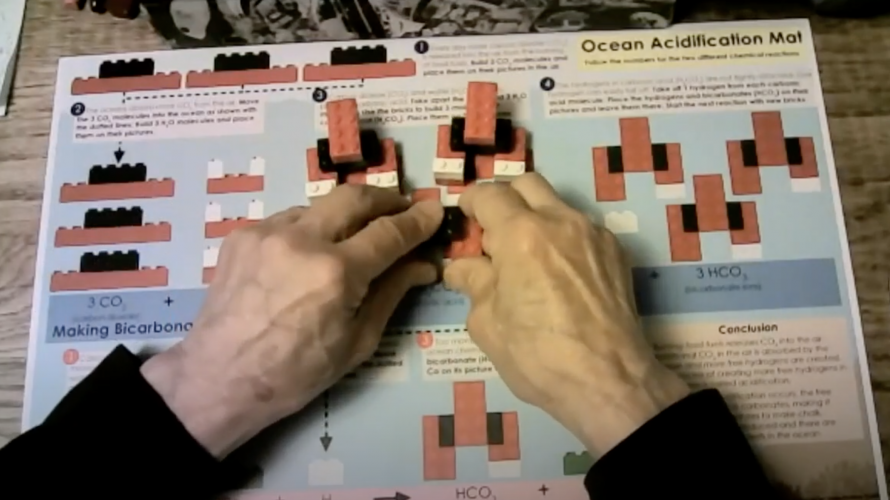Understanding Oceans has students model ocean acidification using LEGO bricks as atoms. Students also learn more about pH and mercury biomagnification in food webs.
Understanding Oceans
This lesson is appropriate for children ages 11 and up. Understanding Oceans has students model ocean acidification using LEGO® bricks as atoms. Students also learn more about pH and mercury biomagnification in food webs. Students first model how increasing levels of carbon dioxide in the air can alter chemical reactions in the ocean water. Several short activities explain what the pH numbers mean, make predictions for our ocean’s pH in the future, and provide suggestions for what students can do to slow down ocean acidification.
Download the Molecule Sets Overview or read the Rationale for using LEGO bricks as atoms.
MIT Edgerton Center Teacher Guides, Resources, and Training:
- Teacher Guide for Understanding Oceans (Google Slides)
- About the Curriculum
- Assembling a Molecule Set
- Teacher Training
- Lesson Preparation
- Classroom Presentation
- Demo for Teaching Understanding Oceans by Kathleen Vandiver with the Molecules Set (ASTA Science Teacher Presentation on Zoom 2021)
Central Concepts: Energy resources are used to sustain human civilization. The amount and accessibility of these resources influence their use and their impact on the environment.
2.1 Recognize, describe, and compare renewable energy resources (e.g., solar, wind, water, biomass) and nonrenewable energy resources (e.g., fossil fuels, nuclear energy).
2.2 Describe the effects on the environment.
Next Generation Science Standards:
MS-ESS3.D.1: Human activities, such as the release of greenhouse gases from burning fossil fuels, are major factors in the current rise in Earth’s mean surface temperature (global warming). Reducing the level of climate change and reducing human vulnerability to whatever climate changes do occur depend on the understanding of climate science, engineering capabilities, and other kinds of knowledge, such as understanding of human behavior and on applying that knowledge wisely in decisions and activities.
MS-PS1.B.1: Substances react chemically in characteristic ways. In a chemical process, the atoms that make up the original substances are regrouped into different molecules, and these new substances have different properties from those of the reactants.







